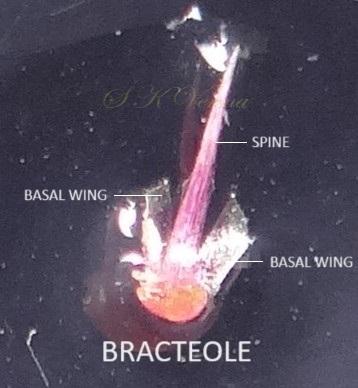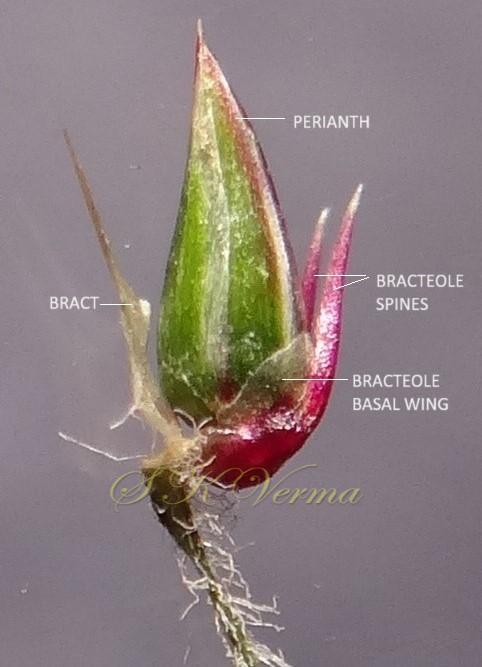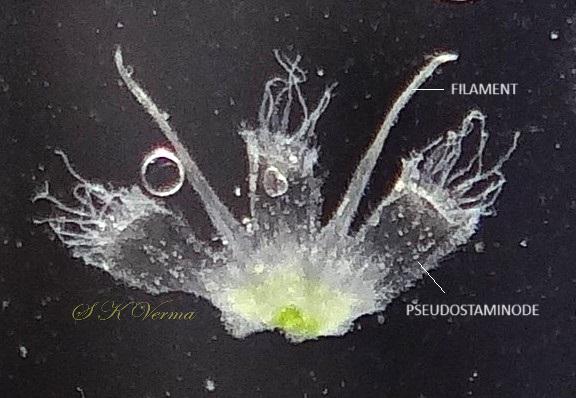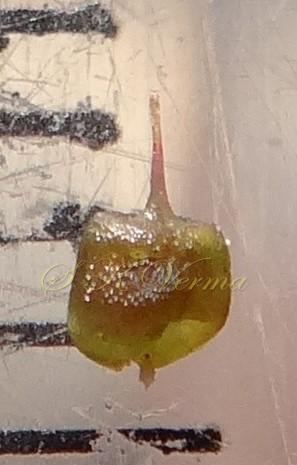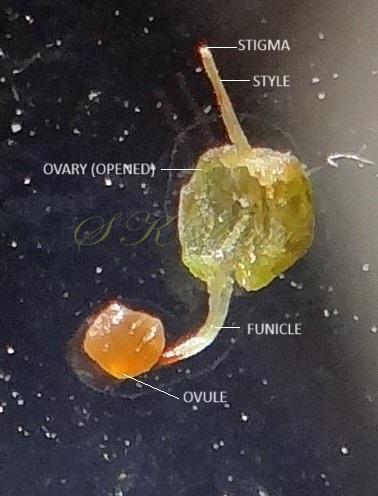ACHYRANTHES
Achyranthes
L., Sp. Pl. 1: 204. 1753; Gen. Pl. 5: 96. 1754; 1867; Boiss., Fl. Or. 4: 993; 1879; Hook. f., Fl. Brit. India 4: 729. 1885; Schinz in E. & P. Pflanzenfam., ed. 2, 16c: 60. 1934; Fl. China @ eFloras.org 5: 424; Fl. North Amer. @ eFloras.org 4: 435; Fl. Pak. @ eFloras.org p. 33.
Annual or perennial herbs or shrubs. Stem erect with conspicuous nodes, branches opposite. Leaves opposite, petiolate, entire. Inflorescence a +/- slender spike, axillary or terminal on stem and branches, the flowers at first congested and +/- patent, finally laxer and often deflexed. Flowers solitary, actinomorphic, bisexual, hypogynous, bracteate and bibracteolate. Bracts deltoid or ovate; bracteoles spinous, the spine furnished at base with short to long and and free to adnate membranous wings. Perianth segments 4-5, membranous, lanceolate, acuminate, 1-3(-5) nerved, aristate with excurrent midrib, indurate (hardened) in fruit especially at base. Stamens 5, rarely 4 or 2, shorter than perianth; filaments filiform, monoadelphous, into a short cup at base, alternating with quadrate to broadly quadrate-spathulate pseudostaminodes, simple and dentate to fimbriate or furnished with a variably developed dorsal scale. Style slender, persistent; stigma small, truncate-capitate. Ovary with a solitary pendulous ovule. Utricle falling off with tepals and bracteoles. Seeds oblong, lenticular.
14 species
Achyranthes aspera
Achyranthes aspera
L., Sp. Pl. ed.1: 204. 1753; Boiss., Fl. Or. 4: 993; 1879; Hook. f., Fl. Brit. India 4: 730. 1885; Collett, Fl. Siml. ed. 2: 414. 1921(Reprint 1983); Sharma & Kachroo, Fl. Jammu (Illustr.) 2: t. 241. 1983; Kaur & Sharma, Fl. Sirmaur 553. 2004; Singh & Sharma, Fl. Chamba Dist. 586. 2006; Fl. China @ eFloras.org 5: 424; Fl. North Amer. @ eFloras.org 4: 436; Fl. Pak. @ eFloras.org p. 33.
Erect or straggling, pubescent, much branched perennial herb or undershrub, 0.3- 1.5 m tall. Stem and branches red or often tinged with reddish-purple, distinctly to obscurely 4-angled, striate or sulcate, densely tomentose. Leaves opposite, elliptic-oblong, ovate-elliptic, obovate or orbicular, 3-12 cm x 1-6 cm; cuneate or nearly rounded at base; rounded, obtuse, acute, shortly acuminate or mucronate at apex; margin undulate, green or tinged purplish-red; densely appressed pubescent on both surfaces; petiole 0.5-2.0 cm long, densely pubescent. Inflorescence terminal spikes, 10-60 cm, peduncles 1-6 cm long; inflorescence elongating as fruits form; inflorescence axis wooly-tomentose with white hairs. Flowers actinomorphic, bisexual, hypogynous, greenish-white, shining; flowers at first congested and patent, finally laxer and strongly deflexed; bracts lanceolate or narrowly ovate, pale or membranous brownish, acuminate, scarious, 1.7-5 mm long, purplish-red; bracteoles 1.5-5 mm long, basal wings 1/4-1/2 the length of spine, adnate to spine at side or base, scarious, purplish-red (because of downward pointing bracteole spines, name of the plant is Puthkanda). Tepals 5, pale green to purplish-red, 4-5.5 mm long, free, subequal, lanceolate, sharply acute, scarious, persistent, 3-nerved (midrib distinct with 2 lateral obscure or distinct veins). Stamens 5, filaments 2-3 mm long, connate at base to form a cup, alternating with subquadrate pseudostaminodes, with margin fimbriate and ciliate at apex. Ovary unilocular, with a single pendulous ovule; style slender, 1-4 mm long; stigma minute, capitate; Utricle ovoid, ca. 2.5-3 mm; seed brown, filling the utricle, ovoid, smooth.
Common Names: Prickly Chaff Flower, Chaff Flower, Crocus Stuff, Crokars Staff, Devil’s Horse whip; Chirchita, Latjira (Hindi)
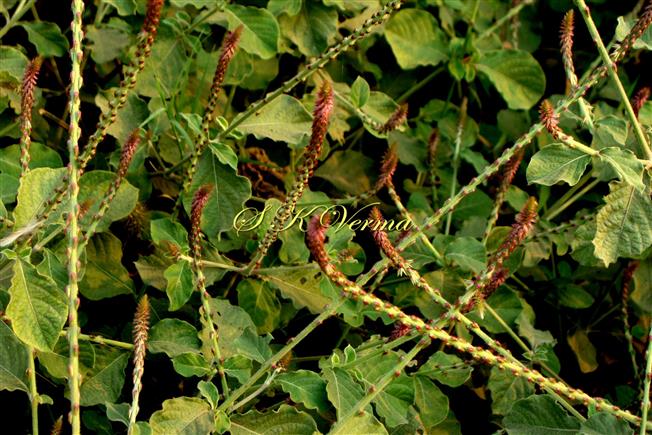
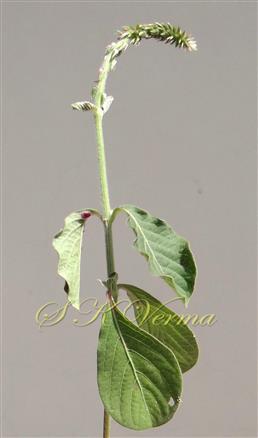
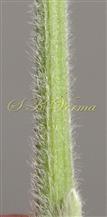
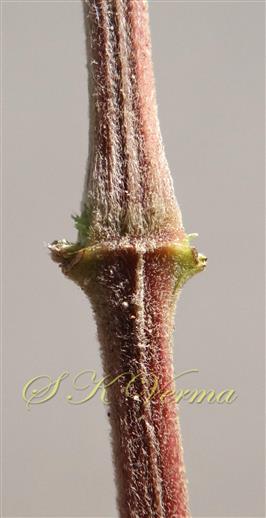
-DSC00941.jpg)
-DSC00942.jpg)
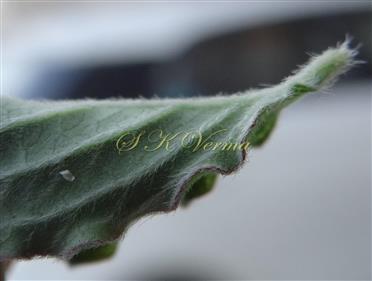
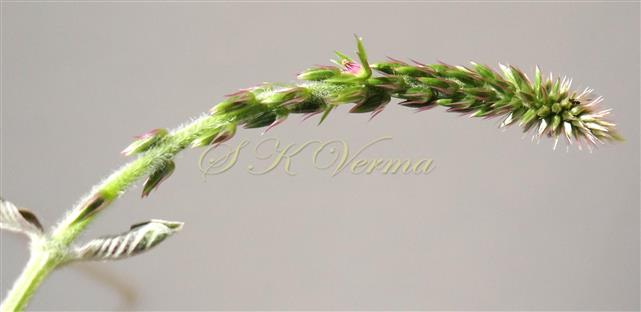
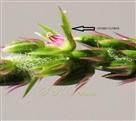
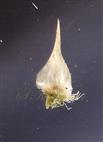


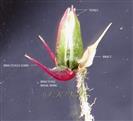
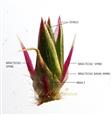
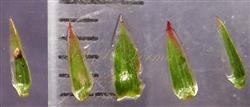




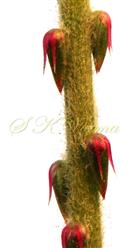





-DSC00941.jpg)
-DSC00942.jpg)




